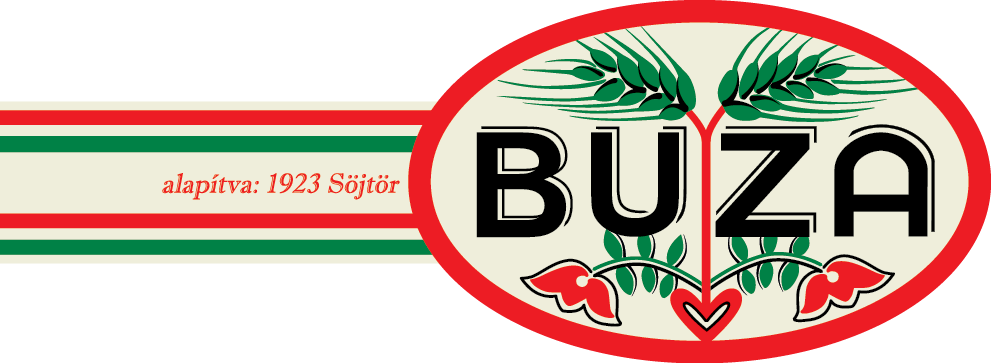Content

– RENTALS-COPYING MACHINES
All costs incurred under rental agreements for copying equipment. – INSTIT MEMBERSHIP FEES & DUES
All costs incurred for institutional membership fees and dues in professional associations. – TELECOMMUNICATIONS
All costs incurred for audio, video, data, fiber optic, satellite, and other specialized transmission modes. – SEWAGE AND GARBAGE
All costs incurred for sewer and garbage fees and charges. – COAL
All costs incurred for coal to be used in power plant operations to produce heat and steam.
What is the difference between GL and journal entry?
The journal consists of raw accounting entries that record business transactions, in sequential order by date. The general ledger is more formalized and tracks five key accounting items: assets, liabilities, owner's capital, revenues, and expenses.
The simplest way to assign general ledger codes is to start with a numeral, such as 100, assigning each subsequent credit or debit category a numerals that adds one more numeral to the number. In this instance, your first five codes would be 100, 101, 102, 103 and 104. To make your codes more helpful, assign numerals a specific meaning for easier sorting.
– NON-WAGE & CONTRACTUAL PAY
This also includes Federal funds applied as contributions to the Federal Group Life Insurance Program. – STUDENT WAGES –SALARIED AND HOURLY
All costs incurred for hours worked by Student Employees with EE subgroup codes of 20, 23, or 30 and paid on the monthly or bi-weekly salary payrolls. – SUMMER SCHOOL SALARIES
All costs incurred representing additional compensation for instruction during the summer quarter for faculty on 9 months service appointments or on term appointments. Additional compensation for administrative or research services rendered during the summer quarter will be processed as extra service pay in the appropriate area of service rendered-generally Academic Salaries. An A/P reconciliation begins with checking the journalized amounts against the invoices received and kept in the A/P files.
- In the case of certain types of accounting errors, it becomes necessary to go back to the general ledger and dig into the detail of each recorded transaction to locate the issue.
- The timing of when information is posted to the general ledger and when the information is reported represents what “has” already happened and limits insight into what’s happening now or what might happen.
- If you’re running a business, it’s essential to have a good understanding of how GL accounts work.
- A general ledger is used to record every financial transaction made by an organization and serves as the basis for various types of financial reports.
- A “chart of accounts” is a complete listing of every account in an accounting system.
- Examples of other general ledger accounts that are commonly used are noted below.
- The accounts receivable process begins when a customer purchases goods or services from a company and is issued an invoice.
– PRINTING
All costs incurred for printing charges on booklets when paper used is being furnished by the customer or charged separately as supplies, whether done on campus in central services facilities or contracted to outside vendors. Prepared forms ordered by lot are to be charged as Operating Supplies (GL account ). Even if you know that ledger code 130 means banner advertising revenue, a new or substitute bookkeeper or tax preparer might not know your codes.
– COMPUTER SERVICES
– CLER/TECH/MAINT OVERTIME
All costs incurred for overtime worked by Clerical/Technical/Maintenance personnel paid on the monthly salary payroll. For example, if you sell color and black-and-white print ads, you can designate the third numeral of your code to be 1 for color ads and 2 for black and white ads. If you used four-numeral codes, your code for color print ads would be 1210 and your code for black-and-white ads would be 1220. This lets you quickly determine your total print sales and break out how much came from color ads. In this case, your entry for print advertising would be 120, for banner advertising 130, and for list rental 140. When a company does not use GL coding, tracking how much money is being spent and where it’s going is harder.

– RETIREMENT CONTRIB-STATE
All costs incurred for employer contributions to Tennessee Consolidated Retirement System for employees covered under this program. – RETIREMENT CONTRIB-ORP/B
All costs incurred for employer contributions for employees covered under the ORP/B program. – PROFESSIONAL/OTHER ACADEMIC SALARIES
All costs incurred for base salaries of personnel with an EE subgroup code of 15. – ADMINISTRATIVE SALARIES
All costs incurred for base salaries of executive and administrative personnel with an EE subgroup code of 10. This is a University defined account used to classify in more detail than the University primary general ledger account the nature of costs incurred.
General Ledger Account Definitions
– AWARDS-STUDENT AID & STIPENDS
All costs incurred for awards made directly to students from scholarships, fellowships, stipends, and other student aid funds. – BAD DEBT EXPENSE
The estimated amounts due to the University arising from auxiliary or hospital sales which are expected to become uncollectible. – INT/LATE FEE PROMPT PAY ACT
All costs incurred in paying interest incurred under the State’s Prompt Pay Act. This object does not include employee-related group hospitalization insurance.
- With legacy accounting systems, the chart of account segments are configured at the time of deployment and fixed for the duration of their lifespans.
- The most crucial aspect of GL coding is that all transactions have a code corresponding to the correct activity and area.
- It’s an extremely valuable tool for any business, as it allows them to keep track of their finances in a simple and organized way.
- It’s typically where the largest portion of GL accounts are maintained, and represent all of a company’s revenue, cost of goods sold, and other expenses.
- Once the amounts are correctly verified, the A/P journal is reconciled to the general ledger master account by ensuring the total for the A/P journal values is the same amount as the total in the master (control) account.
- Unlike balance sheet accounts that are carried forward, income statement accounts are temporary and closed at the end of each year.
In conclusion, a GL Account is an important financial tool used by businesses to track and monitor their finances. It is necessary for businesses of all sizes to understand the basics of GL Accounts in order to effectively manage their books and records. Being able to identify which account needs what type of transaction can help you stay organized and make sure all your accounts are up-to-date with accurate information. With the right tools, GL Accounts can be easy to set up, maintain, and review when needed.
Company
Livestock purchases for immediate slaughter purposes should not be included here but under operating supplies (GL account ). – OTHER EXPENDITURES
All costs incurred that are not properly includable in any of the other GL accounts in this list should be entered under this code. – SERVICE DEPT CREDITS-RECOVERY
All amounts being credited to those departments of the University that have been established to provide service to the University community. Examples are Graphic Arts Service, Photographic Center, Transportation Services, etc. – OTHER PERSONAL SERVICES
All costs incurred for honorariums and any other personal services not under a formal contract arrangement and not on a payroll.
This includes equity, general reserve, and retained earnings out of the profit. In short, this allows finance teams to make strategic decisions to improve operational efficiency and reduce costs. It also ensures a healthy cash flow position and leads to things like investor attraction.
Learn how organizations use a general ledger to track assets, liabilities, revenues, and expenses, prepare financial statements, and measure business performance—as well as how technology has enabled greater insights. If a company receives payment from a client for a $200 invoice, for example, the company accountant increases the cash account with a $200 debit and completes the entry with a credit, or reduction, of $200 to accounts receivable. A general ledger reconciliatreconcilesling all balance sheet accounts, especially those with subsidiary ledgers, to the general ledger. It also reconciles the special journals to their respective backup documentation to ensure good data transcription. Unlike a budget sheet that lists your expected income and expenses, or a receivables or payables report that shows what you owe or are owed, a ledger records transactions only as they happen.
The transaction details contained in the general ledger are compiled and summarized at various levels to produce a trial balance, income statement, balance sheet, statement of cash flows, and many other financial reports. This helps accountants, company management, analysts, investors, and other stakeholders assess the company’s performance on an ongoing basis. A general ledger reconciliation is reconciling all subsidiary ledgers to the general ledger along with the special journals to their respective backup documentation for good data transcription.
Why do companies use general ledger accounts?
Typically, only used in Unexpended Plant Funds for projects in excess of $100,000. – ENGINEERING & INSPECTION FEES – INFRASTRUCTURE
Professional fees such as engineers or inspection fees incurred during the construction of an infrastructure project. – ENGINEERING & INSPECTION FEES – BUILDINGS
Professional fees such as engineers or inspection fees incurred gl account during the construction of a building. – RENTALS-OTHER
All costs incurred for rentals of other equipment and other items not covered under above rental GL accounts or vehicles included under the travel GL accounts. This classification includes such contractual services as elevator services and permits, pest control, janitorial and maid service.
– SUPPLY RECOVERIES
All amounts that are transferred from other University WBS elements/cost centers or collected from outside sources which are to be applied as a recovery against expense which was charged to one of the above GL accounts. – UTILITY RECOVERIES
All amounts that are transferred from other University WBS elements/cost centers or collected from outside sources which are to be applied as a recovery against expense which was charged to one of the above GL accounts. – TRAVEL RECOVERIES
All amounts that are transferred from other University WBS elements/cost centers or collected from outside sources which are to be applied as a recovery against expense which was charged to one of the above GL accounts. A general ledger is the set of all the numbered accounts that are used to keep track of every financial transaction that occurs in the course of business. The general ledger can be filled with hundreds or thousands of accounts and transactions, depending on the type and size of business. Order.co allows companies to accurately catalog their financial transactions with less manual accounting work.
Internal controls are necessary to ensure the reliability of reported data, compliance with applicable laws and regulations, and safeguarding assets against theft or unauthorized use. A written general ledger reconciliation policy helps provide consistency in application and demonstrates management’s commitment to good internal control. The chart of accounts is organized in a manner that is similar to the general ledger. It is ordered sequentially and starts with balance sheet accounts and is then followed by the income statement accounts. This allows you to find an account’s name, its unique number, and typically a brief description.
- – CLER/TECH/MAINT OVERTIME
All costs incurred for overtime worked by Clerical/Technical/Maintenance personnel paid on the monthly salary payroll. - Ledger codes are numerals you use to designate a payable or receivable by type.
- A common example of a general ledger account that can become a control account is Accounts Receivable.
- The accounting for the general ledger is a summary of all the subsidiary ledger in which all the transaction has been recorded.

